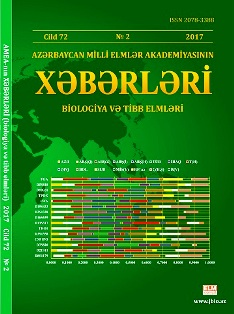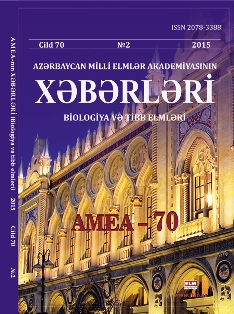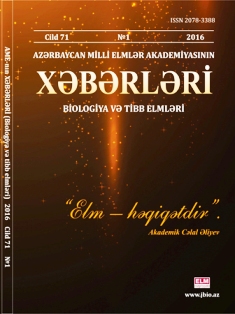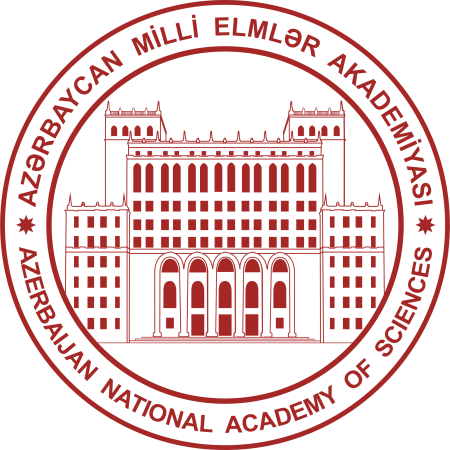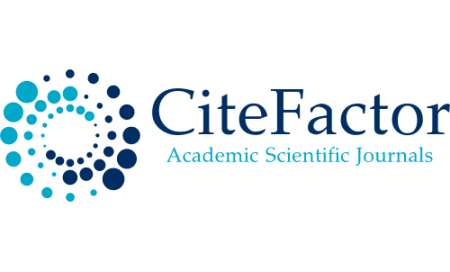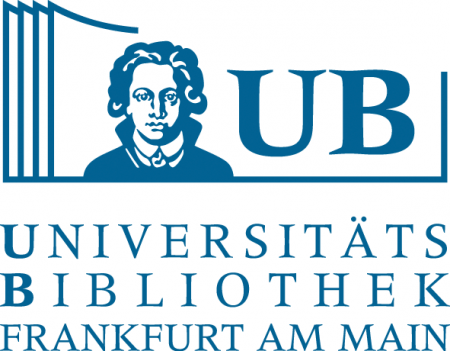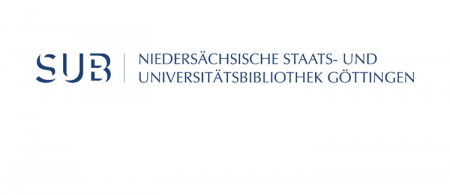
Comparative studies of E, M and N structural proteins of SARS-CoV, SARS-CoV-2, pangolin CoV and bat CoV
Research article: Comparative studies of E, M and N structural proteins of SARS-CoV, SARS-CoV-2, pangolin CoV and bat CoV
Authors: K.G. Gasimov1, T.A. Samadova1, F.K. Abasova 2, I.A. Shahmuradov1,3*
1 Institute of Biophysics, Azerbaijan National Academy of Sciences, 117 academician Zahid Khalilov Str., Baku AZ1141, Azerbaijan
2 Academician Zarifa Aliyeva Lyceum, H.Javid Ave, 253rd block, Baku AZ 1141, Azerbaijan
3 Institute of Molecular Biology & Biotechnologies, Azerbaijan National Academy of Sciences,11 Izzat Nabiyev Str., Baku AZ 1073, Azerbaijan
*For correspondence: ilhambaku@gmail.com
Received 26 October 2020; Received in revised form 25 November 2020; Accepted 30 November 2020
Abstract:
During the last two decades, humanity has been plagued by 3 coronavirus diseases, although the human coronaviruses were discovered over 50 years ago. The latest coronavirus disease discovered in 2019 (COVID-19) is caused by human Severe Acute Respiratory Syndrome Coronavirus 2 (SARS-CoV-2). A question arises: what could be the reason for such activation of coronaviruses in recent years? To answer this question, at least, it is necessary to clarify (1) the history and origin of these viruses, and (2) molecular mechanisms how they very easily and rapidly enter into host cells and cause multifaceted serious disorders. In this study, we compared the structural proteins E, M and N from SARS-CoV-2, SARS, bat and pangolin CoVs. The most striking fact firstly discovered in this study is that the relative proportion of the synonymous substitution rates in M and N pro- teins of the SARS-CoV-2 and pangolin CoV are significantly higher than the corresponding charac- teristics for other CoVs studied. This finding puts several intriguing questions on the emergence and the duration of divergence of the SARS-CoV-2.
Keywords: Coronavirus, COVID-19, E protein, M protein, N protein, pangolin, bat, origin of the SARS- CoV-2, synonymous mutations, non-synonymous mutations
References
Alsaadi E.A., Jones I.M. (2019) Membrane bind-ing proteins of coronaviruses. Future Virol., 14: 275-286.
Altschul S.F., Madden T.L., Schaffer A.A., Zhang J., Zhang Z., Miller W., Lipman D.J. (1997) Gapped BLAST and PSI-BLAST: a new generation of protein database search programs. Nucleic Acids Res., 25(17): 3389-3402.
Bianchi M., Benvenuto D., Giovanetti M., An-geletti S., Ciccizzi M., Rascarella S. (2020) Sars-CoV-2 Envelope and Membrane Proteins: Structural Differences Linked to Virus Characteristics? Bio.Med. Res. International, 2020: 4389089. doi.org/10.1155/2020:4389089.
Cardenas-Conejo Y., Linan-Rico A., Garcia-Rodruez D.A., Centeno-Leija S., Serrano-Posada H. (2020) An exclusive 42 amino acid signature in pp1ab protein provides insights into the evolutive history of the 2019 novel human-pathogenic coronavirus (SARS-CoV2). J. Med. Virol., 92(6): 688-692.
Coutard B., Valle C., de Lamballerie X., Ca-nard B., Seidah N.G., Decroly E. (2020) The spike glycoprotein of the new coronavirus 2019-nCoV contains a furin-like cleavage site absent in CoV of the same clade. Antiviral Res., 176: 104742, doi: 10.1016/j.antiviral.2020.104742.
Cui J., Li F., Shi Z.L. (2019) Origin and evolu-tion of pathogenic coronaviruses. Nat. Rev. Mi-crobiol., 17(3): 181-192.
Damas J., Hughes G.M., Keough K.C., Painter C.A., Persky N.S., Corbo M., Hiller M., Koepfli K.P., Pfenning A.R., Zhao H., Gene-reux D.P., Swofford R., Pollard K.S., Ryder O.A., Nweeia M.T., Lindblad-Toh K., Teeling E.C., Karlsson E.K., Lewin H.A. (2020) Broad host range of SARS-CoV-2 predicted by com-parative and structural analysis of ACE2 in ver-tebrates. Proc. Natl. Acad. Sci. U.S.A., 117(36): 22311-22322.
Fang X., Gao J., Zheng H., Li B., Kong L., Zhang Y., Wang W., Zeng Y., Ye L. (2007) The membrane protein of SARS-CoV suppress-es NF-kB activation. J. Med. Virol., 79(10): 1431-1439.
Fehr A.R., Perlman S. (2015) Coronaviruses: an overview of their replication and pathogenesis. Methods. Mol. Biol., 1282: 1-23. doi: 10.1007/978-1-4939-2438-7_1.
Gralinski L.E., Menachery V.D. (2019) Return of the coronavirus: 2019-nCoV. Viruses, 12: 1-8.
Hoffmann M., Kleine-Weber H., Schroeder S., Kruger N., Herrler T., Erichsen S., Schiergens T.S., Herrler G., Wu N.-H., Nitsche A. (2020) SARS-CoV-2 cell entry de-pends on ACE2 and TMPRSS2 and is blocked by a clinically proven protease inhibitor. Cell, 181(2): 271-280.
Hu B., Ge X., Wang L.-F., Shi Z. (2015) Bat origin of human coronaviruses. Virology J., 12: 221. doi: 10.1186/s12985-015-0422-1.
Huang Q., Yu L., Petros A.M., Gunasekera A., Liu Z., Xu N., Hajduk P., Mack J., Fesik S.W., Olejniczak E.T. (2004) Structure of the N-terminal RNAbinding domain of the SARS CoV nucleocapsid protein. Biochemistry, 43: 6059-6063.
Huang Y., Yang C., Xu X.-F., Xum W., Liu S.-W. (2020) Structural and functional properties of SARS-CoV-2 spike protein: potential antivi-rus drug development for COVID-19. Acta Pharmacologica Sinica, 41(9): 1141-1149.
Lopes L.P., Cardillo G.-M., Paiva P.B. (2020) Molecular evolution and phylogenetic analysis of SARS-CoV-2 and hosts ACE2 protein sug-gest Malayan pangolin as intermediary host. Brazilian J. of Microbiology, June 26: 1-7. doi: 10.1007/s42770-020-00321-1.
Lu X., Pan J., Tao J., Guo D. et al. (2011) SARS-CoV nucleocapsid protein antagonizes IFN-b response by targeting initial step of IFN-b induction pathway, and its C-terminal region is critical for the antagonism. Virus Genes, 42(1): 37-45.
Malaiyan J., Arumugam S., Mohan K., Ra-dhakrishnan G.G. (2020) An update on the origin of SARS‐CoV‐2: Despite closest iden-tity, bat (RaTG13) and pangolin derived corona-viruses varied in the critical binding site and O‐linked glycan residues. Med. Virol., July 7: 1-7. doi:10.1002/jmv.26261.
McIntosh K., Dees J.H., Becker W.B., Ka-pikian A.Z., Chanock R.M. (1967) Recovery in tracheal organ cultures of novel viruses from patients with respiratory disease. Proc. Natl. Acad. Sci. USA, 57(4): 933-940.
McIntosh K. (1974) Coronaviruses: A compara-tive review. In: W.Arber, R.Haas, W.Henle et al. (eds.). Current Topics in Microbiology and Im-munology/Ergebnisse der Mikrobiologie und Immunitätsforschung. Berlin, Heidelberg: Springer, p. 85-129.
Menachery V., Yount B., Debbink K., Ag-nihothram S., Gralinski L.E., Plante J.A., Graham R.L., Scobey T., Ge X.-Y., Don-aldson E.F., Randell S.H., Lanzavecchia A., Marasco W.A., Shi Z.-L., Baric R.S. (2015) A SARS-like cluster of circulating bat corona-viruses shows potential for human emergence. Nat. Med., 21(12): 1508-1513.
Meredith L.W., Hamilton W.L., Warne B., Houldcroft C.J., Hosmillo M., Jahun A.S., Curran M.D., Parmar S., Caller L.G., Caddy S.L., Khokhar F.A., Yakovleva A., Hall G., Feltwell T., Forrest S., Sridhar S., Weekes M.P., Baker S., Brown N., Moore E., Popay A., Roddick I., Reacher M., Gouliouris T., Peacock S.J., Dougan G., Török M.E., Good-fellow I. (2020) Rapid implementation of SARS-CoV-2 sequencing to investigate cases of health-care associated COVID-19: a prospective genomic surveillance study. Lancet Infect. Dis., July 14: doi: 10.1016/S1473-3099(20)30562-4.
Munnink B.B., Nieuwenhuijse D.F., Stein M., O’Toole A., Haverkate M., Mollers M., Kam-ga S.K., Schapendonk C., Pronk M., Lexmond P., van der Linden A., Bestebroer T., Chesta-kova I., Overmars R.J., van Nieuwkoop S., Molenkamp R., van der Eijk A.A., Kessel C.G., Vennema H., Meijer A., Rambaut A., van Dissel J., Sikkema R.S., Timen A., Koopmans M., Dutch-Covid-19 response team (2020). Rapid SARS-CoV-2 whole-genome se-quencing and analysis for informed public health decision-making in the Netherlands. Nature Med-icine, 26(9): 1405-1410.
Rabi F.A., Al Zoubi M.S., Kasasbeh G.A., Sal-ameh D.M., Al-Nasser A.D. (2020) SARS-CoV-2 and coronavirus disease 2019: What we know so far. Pathogens, 9(3): 231. doi: 10.3390/pathogens9030231.
Ruch T.R., Machamer C.E. (2011) The hydro-phobic domain of infectious bronchitis virus E protein alters the host secretory pathway and is important for release of infectious virus. J. Vi-rol., 85: 675-685.
Satarker S., Nampoothiri M. (2020) Structural proteins in severe acute respiratory syndrome coronavirus-2. Arch. Med. Res., 51(6): 482-491.
Shi Z., Hu Z. (2020) The genetic sequence, origin, and diagnosis of SARS-CoV-2. Eur. J. Clin. Microbiol. Infect. Dis., 39(9): 1629-1635.
Sievers F., Higgins D.G. (2014) Clustal Omega, accurate alignment of very large numbers of se-quences. Methods Mol. Biol., 1079: 105-116. doi: 10.1007/978-1-62703-646-7_6.
Sievers F., Higgins D.G. (2018) Clustal Omega for making accurate alignments of many protein sequences. Protein Sci., 27(1): 135-145.
Tang Q., Song Y., Shi M. (2015) Inferring the hosts of coronavirus using dual statistical mod-els based on nucleotide composition. Scientific Reports, 5: 17155, doi: 10.1038/srep17155.
Tang X., Wu C., Li X., Song Y., Yao X., Wu X., Duan Y., Zhang H., Wang Y., Qian Z. (2020) On the origin and continuing evolution of SARS-CoV-2. National Science Review, 7(6): 1012-1023.
Tian X., Li C., Huang A., Xia S., Lu S., Shi Z., Lu L., Jiang S., Yang Z., Wu Y. (2020) Potent binding of 2019 novel coronavirus spike protein by a SARS coronavirus-specific human mono-clonal antibody. Emerg. Microbes Infect., 9(1): 382-385.
V’kovski P., Gerber M., Kelly J., Pfaender S., Ebert N., Lagache S.B., Simillion C., Portmann J., Stalder H., Gaschen V., Brug-gmann R., Stoffel M.H., Heller M., Dijkman R., Volker T.V. (2019) Determination of host proteins composing the microenviron-ment of coronavirus replicase complexes by proximity-labeling. Elife, 8: e42037.
Wang H., Li X., Li T., Zhang S., Wang L., Wu X., Liu J. (2020) The genetic sequence, origin, and diagnosis of SARS-CoV-2. Eur. J. Clin. Microbiol. Infect. Dis., 39(9): 1629-1635.
Wang Q., Li C., Zhang Q., Wang T., Li J., Guan W., Yu J., Liang M., Li D. (2010) Inter-actions of SARS Coronavirus nucleocapsid pro-tein with the host cell proteasome subunit p42. Virol. J., 7: 99. doi: 10.1186/1743-422X-7-99.
Yan X., Hao Q., Mu Y., Timani K.A., Ye L, Zhu Y., Wu J. (2006) Nucleocapsid protein of SARS-CoV activates the expression of cycloox-ygenase-2 by binding directly to regulatory ele-ments for nuclear factor-kappa B and CCAAT/enhancer binding protein. Int. J. Bio-chem. Cell Biol., 38(8):1417-1428.
Zeng W., Liu G., Ma H., Zhao D., Yang Y, Liu M., Mohammed A., Zhao C., Yang Y., Xie J., Ding C., Ma X., Weng J., Gao Y., He H., Jin T. (2020) Biochemical characterization of SARS-CoV-2 nucleocapsid protein. Biochem. Biophys. Res. Commun., 527(3): 618-623
Zeng Y., Ye L., Zhu S., Zheng H., Zhao P., Cai W., Su L., She Y., Wu Z. (2008) The nucle-ocapsid protein of SARS associated coronavirus inhibits B23 phosphorylation. Biochem. Bio-phys. Res. Commun., 369(2): 287-291.
Zhang T., Wu Q., Zhang Z. (2020) Probable pangolin origin of SARS-CoV-2 associated with the COVID-19 outbreak. Current Biology, 30(7): 1346-1351.
